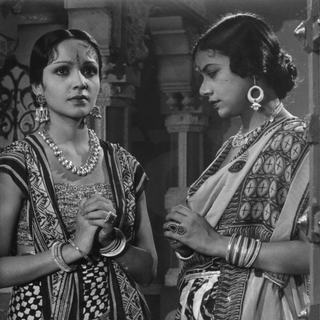
Apps Like Uber, Ola Make Driving a Flexible Profession. Why Can’t More Women Tap Into It?
In theory, these apps provide a unique opportunity for women, but everything from safety concerns to inaccessible incentives stand in their way.

“Recently, I changed my name on the app to Namit…. Ever since, fewer riders have cancelled on me,” says Namita, a driver in New Delhi. “Once a male rider demanded to see my license and the registration documents. When questioned, he said that women do not know how to drive. I immediately cancelled the trip. He would never treat a man like this.”
Namita doesn’t face these challenges alone. In interviews with 200 women drivers from Mumbai, New Delhi, and Bangalore, most shared similar experiences.
Ride-hailing services, on paper, provide a unique opportunity for women to engage with the digital economy. These jobs offer flexible hours, independence, and the overall convenience of the gig economy. But the profession still suffers from gendered obstacles that keep women from taking advantage of its promise for financial independence. Lack of safety, inaccessible incentives, sexism from customers, and other socio-cultural barriers prevent them from fully participating.
Primarily, the safety of female drivers is not guaranteed within the profession. Many drivers shared that they were uncomfortable being on the roads late at night or early in the morning. They said they always carried self-protection in their bags, such as pepper sprays, scissors, and red chili powder. One-fourth of the drivers interviewed shared that they did not trust the safety features of the apps, citing that it took more than five minutes to contact driver support.
“I think driving an auto-rickshaw is safer than a car. If I yell, I can be heard. At night, I prefer to drive in busy areas and prefer to have female customers, as it makes me feel safer,” shares Mary, an auto-rickshaw driver in Bangalore. “Driving makes me feel independent … [but] often male drivers tell me to stop trying to do a man’s job.”
Related on The Swaddle:
Emerging Gig Economy a Prime Opportunity to Include Working Women
More than 80% of the drivers shared they also faced resistance from their families, who don’t support their pursuit of driving as employment. Even when they do begin driving, socio-cultural limitations often prevent these women from pursuing it as a full-time job.
“I have been driving for over two years. I start in the mornings, after finishing my chores and cooking for my tiffin service. I drive until sunset. In the evenings, I take care of my children and do my tailoring job,” says Mumtaz, an auto-rickshaw driver in New Delhi.
Ride-hailing services often do not consider female drivers in their design. Almost 70% of these drivers are often unable to meet their incentives due to domestic duties. Incentives are usually higher for peak hours, late nights, and long-distance travel. The latter two of these options are not viable for female drivers. Furthermore, peak hour driving is not always fruitful as the roads are the busiest, increasing travel times and hence, reducing the number of possible trips.
“While driving is also a second job for my brother, he can earn much more than me,” Shaheen, a driver in Mumbai, shares. “Sometimes, he sleeps in the car for a few hours late at night and then restarts. I do not have this luxury. He does not have to worry about his house, as us women take care of it along with our other jobs.”
Better for women, better for business
Much has been written about the safety, or lack thereof, of women riders. Improving safety for women drivers would have a ripple effect. More inclusive ride-hailing services would not only increase the consumer base of these services but also increase labour force participation, which can help these services meet current demands, diversify their type of services and enable further growth.
More obviously, this will lead to increased safety of all women on the roads. Both drivers and riders unanimously shared that a choice for female drivers or riders would increase comfort. “Men always like to give us instructions. Once, I had a male passenger move up to the front seat. Throughout the entire trip, he held the steering wheel and instructed me on gear shifts,” shares Helen, a driver from Bangalore. “I have a female friend who was harassed by her male passenger. These experiences would not happen with female passengers.”
Investing in creating robust feedback mechanisms through which female drivers and riders can document their experiences, any cases of harassment, and recommend improvements, is one way to make apps more gender transformative — and profitable.
Related on The Swaddle:
Flexi Time Can Close Wage Gap Between Moms and Childless Women
Furthermore, current incentive structures require drivers to accept back-to-back rides. This proves difficult for female drivers, who need to be able to step away to conduct domestic duties. The gendered roles of women need to be considered when designing incentive structures. For instance, providing a larger array of incentives for drivers that go beyond long-distance and night-time driving, and encouraging female drivers to choose female riders, could improve their experience.
Tapping into this niche market could result in more female drivers joining the profession.
“I worked with a ride-hailing service for over a year. I have recently joined a private taxi service that provides female driver services for women. Even if the shifts are late, I am much more comfortable here,” says Fatima, a driver in Bangalore. Over the last few years, there has been an increase in private taxis services that enlist female drivers for female customers. These include TaxShe, the Pink Auto Service, SheCab, Bikxie and Koala Kabs.
To make this economy more gender-inclusive, ride-hailing services need to provide gender-transformative solutions for all their drivers — male and female — and ensure each driver can make the most of their driving. Driving should be as lucrative and accessible an employment opportunity for women, as it is for men. These services can play a pivotal role in creating an equal market for both male and female users.
“I was initially very nervous,” says Lila, who began driving with a private-taxi service in Mumbai two years ago. “The roads here belong to a man. Most drivers are men. If every street has an equal number of boys and girls playing as children, then why don’t the roads see equal numbers in drivers?”
Devina Srivastava works on issues of gender, economic inclusion, and digital development. She has worked with numerous non-profits across the world on digital identity, financial inclusion, menstrual health management, and migration. She holds a Master of Public Administration from Columbia University.
Related


Woe Is Me! “My Sibling Rivalry Is Destroying My Family. How Do I Cope?”
